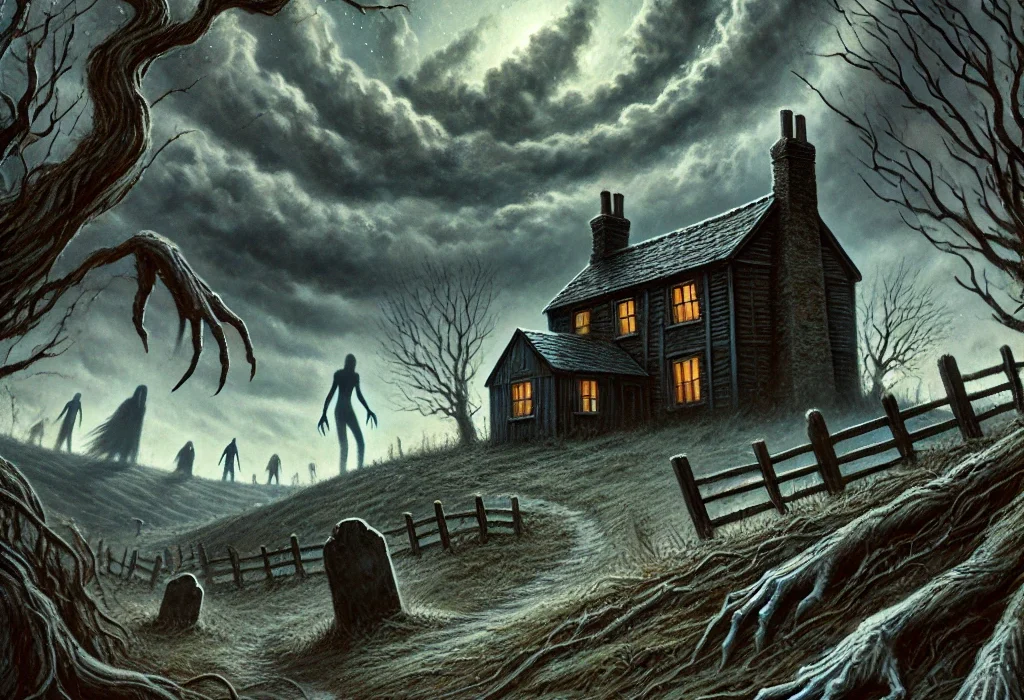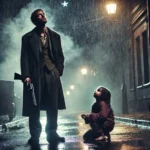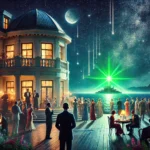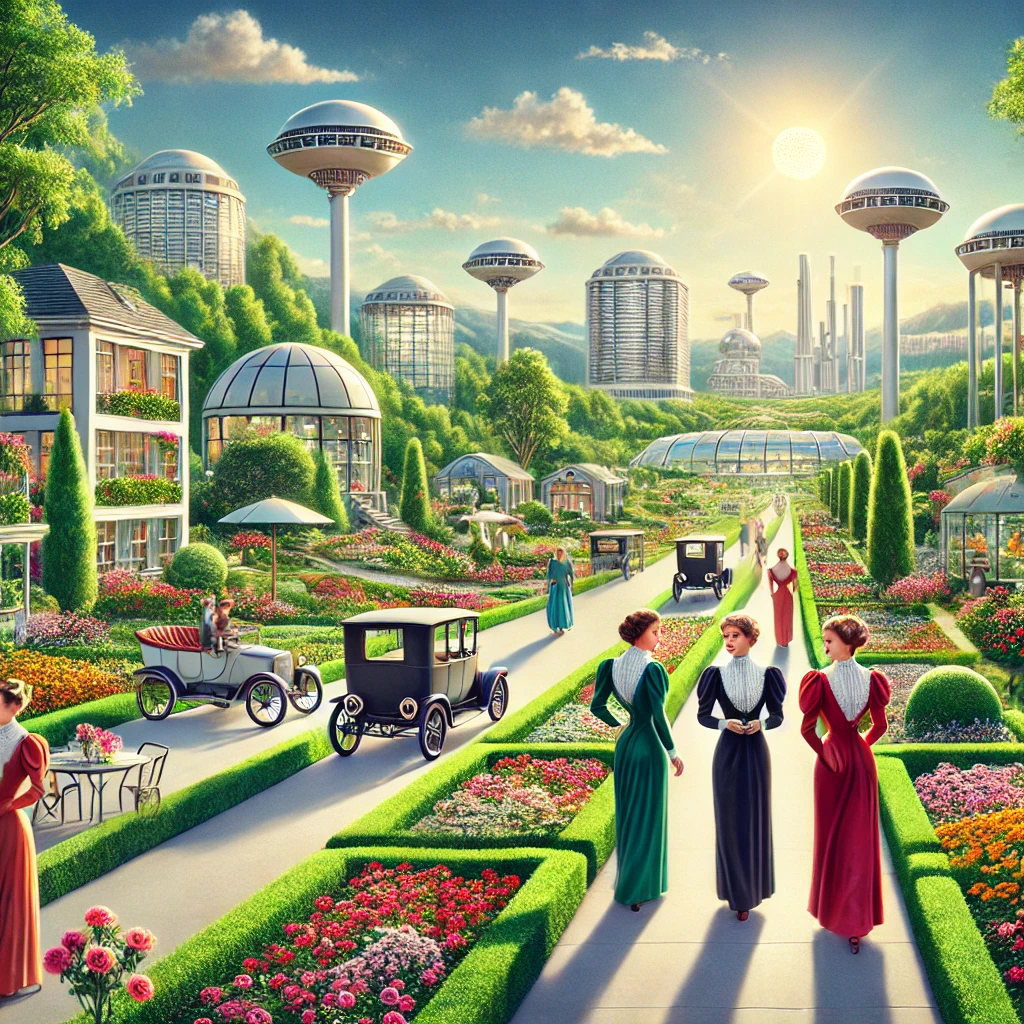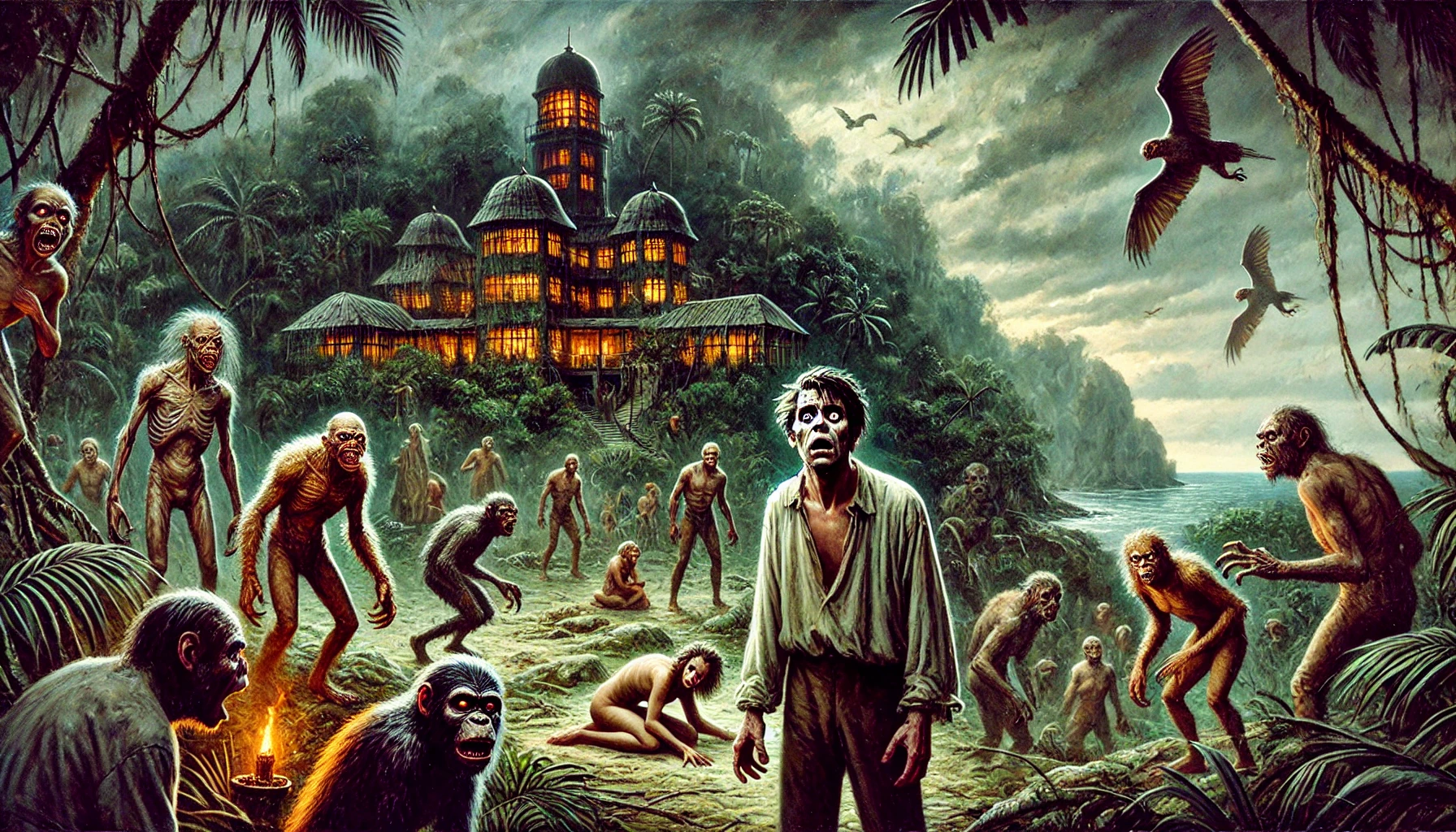The Dunwich Horror is a short story by H.P. Lovecraft, first published in 1928. It stands as one of the central works of Lovecraft’s mythos, blending horror and science fiction. The story takes place in the fictional, decaying town of Dunwich, located in rural Massachusetts. The Whateley family, central to the tale, harbors dark secrets tied to ancient, cosmic forces. The narrative weaves elements of witchcraft, monstrous entities, and forbidden knowledge, encapsulating Lovecraft’s theme of “cosmic horror” — the idea that the universe is filled with malevolent forces beyond human understanding.
Plot Summary
The hills of Dunwich loomed over the desolate countryside, their dark shapes ominously silent. Few ventured into the town, and those who did returned with tales of decay and strange folk. A sense of isolation clung to the place like mist, for Dunwich was no ordinary town. In the shadow of these hills lived the Whateley family—an old line with whispers of inbreeding and witchcraft trailing them for generations.
It was in this forsaken town, on a cold February morning in 1913, that Wilbur Whateley was born. His mother, Lavinia, a gaunt albino woman, had no husband, and her father, Old Whateley, was infamous for his dabbling in forbidden knowledge. Wilbur was no ordinary child. He grew unnaturally fast—by the age of three, he appeared as large as a boy of ten. His mind, too, was different. It seemed ancient, filled with knowledge no child should possess, and from the start, there was something unnerving about his goatish, almost inhuman appearance.
Dunwich whispered about the strange events at the Whateley farm. Fires would blaze atop the nearby Sentinel Hill, and the townsfolk would hear unearthly noises echoing from the hills at night. Old Whateley, now even more reclusive, could be seen making regular trips into town to buy cattle. Yet, the number of animals on his farm never seemed to increase. Soon, strange marks began to appear on the land—signs of something unnatural stirring beneath the earth.
By the time Wilbur was ten, his grandfather had completed renovations on their decaying house, particularly the upper floor, which remained sealed off from prying eyes. The townsfolk grew wary, noticing Wilbur’s uncanny intelligence and the way he avoided other children. He would often be seen studying the ancient tomes left by his grandfather, including one that sent shivers down the spine of even the most skeptical—the dreaded Necronomicon.
In 1924, the old man finally died, but not before passing on dark, cryptic instructions to Wilbur. Lavinia, now under her son’s control, grew even more fearful, often seen muttering to herself as she wandered the hills. The people of Dunwich had long grown used to the peculiarities of the Whateley family, but even they sensed that something dreadful was brewing—something tied to the strange rites on Sentinel Hill and the increasingly frequent and bizarre sounds that seemed to come from the earth itself.
As Wilbur matured, so did his obsession with the occult. He knew that his family’s work was not yet complete. He needed the complete edition of the Necronomicon, for in it lay the key to opening the gates to another realm. The version left to him by his grandfather was missing crucial pages. Determined, he traveled to the nearby Miskatonic University, seeking access to their complete Latin version. He appeared a strange sight—a giant of a man, nearly eight feet tall, dark and monstrous in his appearance, more beast than human.
At the university, Wilbur’s request was denied by Dr. Henry Armitage, the head librarian. Armitage, a man versed in ancient lore, felt something deeply wrong with the young man’s purpose. The very presence of Wilbur disturbed him, and the librarian resolved not to let the Necronomicon fall into the Whateley’s hands.
Frustrated, Wilbur attempted to steal the book under the cover of night. But fate, or something far darker, intervened. The university’s watchdog attacked him viciously, ripping at his flesh. When Armitage and other professors arrived, they found Wilbur barely alive, lying in a pool of a strange, greenish fluid, far from human blood. His body was grotesque—only partially human. With his dying breath, Wilbur whispered alien words of ancient power before succumbing to death, his form crumbling into something unearthly. The professors, horrified by the sight, realized that Wilbur had been but a vessel for something far older and more terrifying.
But Wilbur’s death was only the beginning. Back in Dunwich, something monstrous was stirring. With no one left to control it, the Whateley farmhouse erupted in chaos. From the sealed upper floor burst a colossal, invisible horror—a thing summoned by Old Whateley’s forbidden rituals, now unleashed upon the countryside. The townsfolk awoke to find the farm in ruins, the cattle mutilated, and the ground torn apart by vast, unholy footprints, each print larger than any earthly creature could make.
Panic swept through Dunwich as the unseen terror began its rampage. It moved through the land, smashing through forests, breaking down walls, and leaving behind a trail of death and destruction. The townsfolk could feel its presence, hear its grotesque slithering, but none could see it. And at night, when the whippoorwills sang in strange, discordant notes, they whispered of the creature’s insatiable hunger.
Dr. Armitage, now fully aware of the threat, rushed to Dunwich with two colleagues, armed with arcane knowledge and the few surviving rituals from the Necronomicon. Together, they ascended Sentinel Hill, where they found the horror at the peak—a monstrous, shapeless thing from beyond the stars, only partially visible under the flickering light. It was the spawn of Yog-Sothoth, a being from a dimension beyond human comprehension.
As the professors began their ritual to banish the creature, it lashed out in fury. The air vibrated with its otherworldly howls, and the earth trembled beneath its weight. But Armitage and his companions persisted, invoking ancient words of power. Slowly, the monstrous entity began to fade, its terrible form dissolving back into the unseen realms from whence it came.
The horror passed, but the memory of it lingered. Dunwich was left broken, its people forever haunted by what they had witnessed. The signs of the terror were everywhere—in the crushed trees, the ruined fields, and the strange, circular impressions left on the summit of Sentinel Hill. Though the creature had been banished, the townsfolk knew that the ancient forces awakened by the Whateleys still lurked beneath the earth, waiting for another opportunity to break through.
In the end, Dunwich returned to its quiet decay, its people fearful of the knowledge that their town had stood on the brink of cosmic destruction. And though the signposts leading to the town had been removed, those who lived there could never forget the terror that once walked unseen among them.
Main Characters
Wilbur Whateley: Wilbur is the strange offspring of Lavinia Whateley, growing at an unnatural rate and demonstrating knowledge and abilities far beyond his years. He is dark, goat-like in appearance, and is central to a larger, terrifying cosmic plan involving the summoning of Yog-Sothoth. His role as a key player in the unfolding horror drives the story forward.
Lavinia Whateley: Wilbur’s albino mother, Lavinia, is portrayed as somewhat simple and strange. She is a tool in the Whateley family’s larger, dark purpose, and her life is one of isolation and tragedy, contributing to the aura of dread surrounding the family.
Old Whateley: The patriarch of the Whateley family, Old Whateley is a practitioner of dark, arcane rituals, passing on forbidden knowledge to his grandson Wilbur. His life’s work revolves around preparing Wilbur for the summoning of Yog-Sothoth, making him a pivotal figure in the family’s terrifying legacy.
Dr. Henry Armitage: Armitage is the head librarian of Miskatonic University and one of the key protagonists. He is the voice of reason, armed with knowledge of the occult. As the horror unfolds, it is Armitage who takes up the challenge of stopping the Whateleys’ cosmic plan.
Theme
Cosmic Horror: One of the core themes in The Dunwich Horror is the insignificance of mankind in the grand scope of the universe. The story introduces terrifying, ancient entities that exist beyond human comprehension, and whose influence can shatter the very fabric of reality. The Whateleys’ summoning of Yog-Sothoth highlights Lovecraft’s recurring idea of cosmic forces that are indifferent or hostile to humanity.
Forbidden Knowledge: The story revolves around the dangers of acquiring knowledge not meant for human minds. The Whateley family has access to dark, arcane books, such as the Necronomicon, and the quest for this knowledge leads to catastrophe. Dr. Armitage, too, navigates the fine line between protecting humanity from such knowledge and delving into it for the sake of understanding and prevention.
Degeneracy and Isolation: Dunwich itself is portrayed as a town on the edge of decay, isolated from the rest of society. The Whateleys are a symbol of this degeneracy, as their inbreeding and association with eldritch powers represent the collapse of traditional moral and physical boundaries. The theme of isolation, both geographically and intellectually, feeds into the story’s atmosphere of dread.
Writing Style and Tone
Lovecraft’s writing style in The Dunwich Horror is dense and atmospheric, filled with detailed descriptions that evoke an overwhelming sense of dread and otherworldliness. His use of antiquated language and elaborate sentence structures builds the aura of an ancient, hidden world coming to light. This method of storytelling creates a slow-burning tension, pulling readers into the mystery and horror that gradually escalates. Lovecraft avoids direct confrontation with the terrifying elements early on, preferring to hint at unspeakable horrors lurking just beyond perception.
The tone of the story is dark, foreboding, and infused with a sense of impending doom. Lovecraft employs a detached, almost clinical narrative voice, which contrasts with the visceral, horrifying events unfolding within the story. This tone emphasizes the theme of humanity’s insignificance and the futility of attempting to fully comprehend the malevolent forces at work in the universe. The scholarly tone, particularly through the character of Dr. Armitage, also reflects Lovecraft’s blending of rationality with supernatural terror, as even the most learned individuals are ultimately powerless against the cosmic horrors they encounter.
We hope this summary has sparked your interest and would appreciate you following Celsius 233 on social media:
There’s a treasure trove of other fascinating book summaries waiting for you. Check out our collection of stories that inspire, thrill, and provoke thought, just like this one by checking out the Book Shelf or the Library
Remember, while our summaries capture the essence, they can never replace the full experience of reading the book. If this summary intrigued you, consider diving into the complete story – buy the book and immerse yourself in the author’s original work.
If you want to request a book summary, click here.
When Saurabh is not working/watching football/reading books/traveling, you can reach him via Twitter/X, LinkedIn, or Threads
Restart reading!


